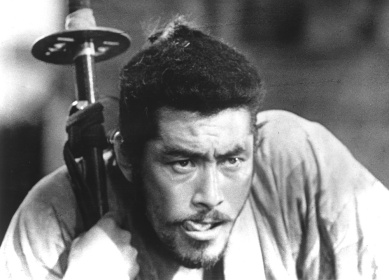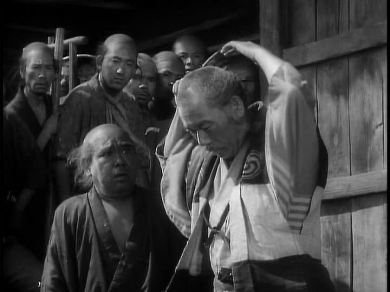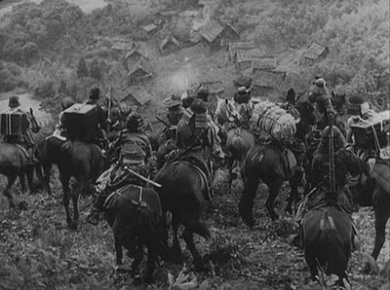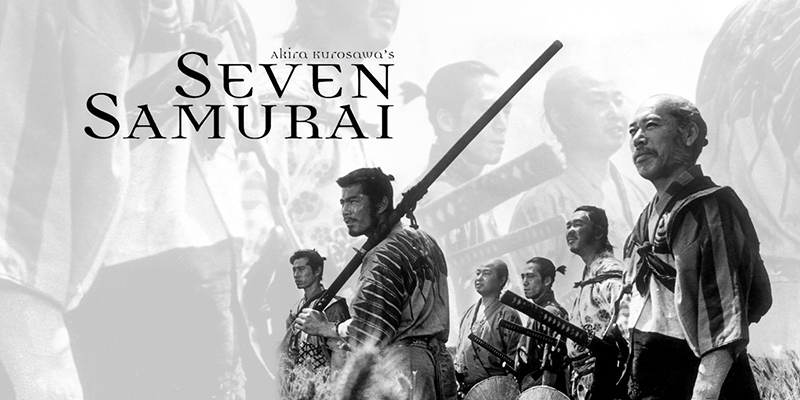Hailed as one of the most important and influential films of all time, Akira Kurosawa’s The Seven Samurai thrusts various Japanese ideals onto the global film stage. It is rooted within the Japanese tradition of group collectivism, a concept that entails citizens working together to accomplish common goals. Society looms significant as a huge responsibility for every Japanese where they are strictly homogenous and do not enjoy doing things differently from others
However, when The Seven Samurai was released in 1954, there was a slight push towards soft individualism among the younger generation. This was brought upon by winds of modernization that were slowly encroaching and eventually embraced by the community. More valued greater personal autonomy and concentrated solely on attaining self-fulfillment. Trapped between individual will and collective responsibility, the tension between both grew more palpable than what was reflected on the screen.
An individualist himself, Kurosawa explored societal needs against one’s selfish demands on the big screen by aptly reflecting different schools of thoughts through the characters he portrayed. Kikuchiyo, a false samurai who later goes on to prove himself as a true warrior, exemplifies the latter as he maintains a strong resolve to become worthy and respected by the group. No one cares for this more than himself as he battles his shadow self to eject away from an undistinguished past.

Kikuchiyo comes from a family of farmers who are considered deadwood within the society. Samurais occupied the top of Japan’s social hierarchy during the Sengoku Jidai period of 1467 to 1573, while farmers, artisans and merchants took up subsequent rungs. A Japanese man was ordained to stay in his respective class and prevented from jumping ship to another. Most were resigned to this, seen when a farmer laments “We were born to suffer; it’s our fate” in the opening sequence. However, Kikuchiyo was reluctant to continue a meaningless existence and valiantly declared that he never wants to be a worm.
Juxtaposed to Kikuchiyo’s own wants and personal gains is Kambei who embodies Kurosawa’s vision of an ideal Japanese man. He is selfless, powerful and is constantly aware of his community’s needs. When a child is held captive by a thief in the village, Kambei welcomed his call to adventure by shaving his head to disguise as a monk. By doing so, he relinquished his status as a samurai to serve those around him.

As Kambei orders a troupe of villagers back to their posts to prevent further infiltrations, he speaks for Japanese collectivism by declaring that “He who thinks only about himself will destroy himself, too!”. It becomes apparent that Kurosawa does not measure a man’s worth through Hanzo steel, but how this blade honors a greater good.
The Seven Samurai’s towering cultural achievement propelled the film to historical prominence, becoming Japan’s highest grossing movie at that time and set a new benchmark for the film industry. A technical and creative watershed, it influenced Western Cinema although the film itself was swayed by it. Kurosawa was known to be a keen admirer of John Ford and Howard Hawks where a narrative resemblance can be seen with Ford’s penchant to narrow plots to men fighting to preserve society when it no longer has a place for them. It was also one of the first films to utilize heroes coming together to fulfill a specified task, a common plot element today that is evident in films such as Ocean’s Eleven and The Dirty Dozen. Introducing the leader, and in this case a reluctant hero, Kambei, to first take on a task unrelated to his main calling, has also spawned similar plot devices.
Plenty of directors have also been heavily influenced by The Seven Samurai’s aesthetic appeal. Kurosawa’s slow-paced, multi-camera montage of his characters’ death was adapted by Arthur Penn in Bonnie and Clyde (1967). Notably, when Kambei kills the thief who has kidnapped a child, Kurosawa intercuts footages from more than one camera to accentuate and evoke anxiety from the villagers.
It has also been widely acknowledged that the “horizon shot”, regularly seen in films today, was first introduced in The Seven Samurai. Kurosawa applied this when the bandits rushed into view over the hilltop as they devised an attack on the villagers. Similar scenes were enacted in subsequent action films such as Steven Spielberg in Close Encounters of the Third Kind while Kurosawa’s iconic wipe-effect transitions between scenes were also adapted by George Lucas in his Star Wars franchise.


What remains most impressive about Kurosawa’s work is his absorbing action sequences and calculated camera movements. Scenes to convey an intimate connection between a character, theme and environment is paced nicely in a variety of wide shots. Frequently tapping on deep focus to capture the fore, middle and background, he uses multiple cameras which allows even better views.
In the climatic fighting scene, numerous angles allow us to feel and digest each death that befalls his characters. Pacing is crisp, enabling viewers just enough time to see what is going on while jump cuts provide an added dynamism to these sequences. Significant deaths were portrayed slowly to connect viscerally with the audience and allow them to reflect over each. Others, such as Kikuchiyo’s, was played out regularly to imply that the battle held greater significance and preceded these losses.
Kurosawa’s magnum opus affirms its position as one of the best films ever created. By unifying realism and other cinematic models, he has managed to transfix viewers into leaving a screening of admiration honoring his work and vision as an influential film maker.



